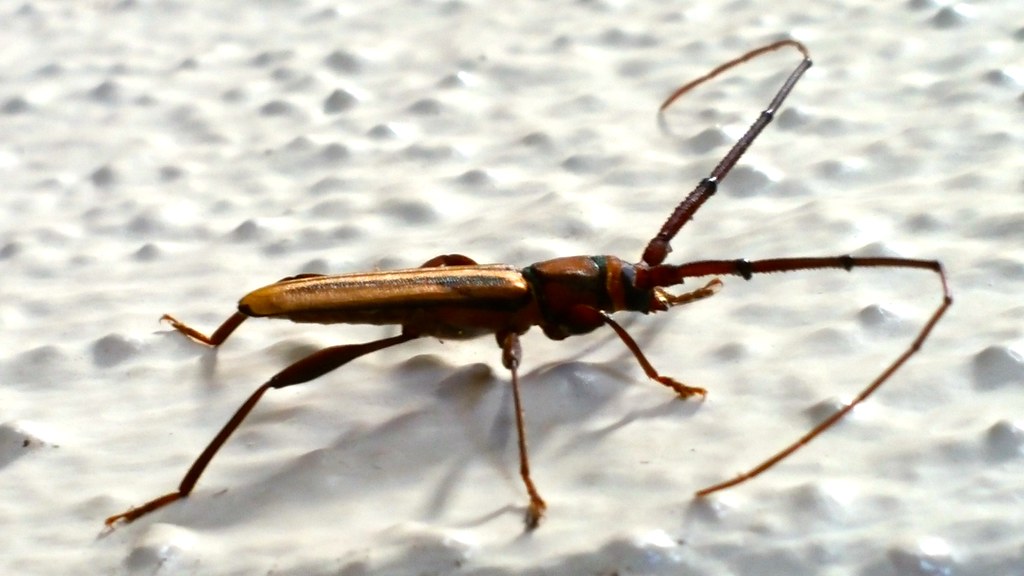The natural world is a theater of survival, where predators and prey engage in a perpetual dance of life and death. Among these intricate relationships, insect hunters stand out as some of the most refined and efficient predators on our planet. These remarkable creatures have evolved sophisticated strategies and adaptations specifically designed to capture the abundant but often elusive insect populations that inhabit virtually every ecosystem. From lightning-fast strikes to elaborate traps, from deadly venom to remarkable teamwork, nature’s insect hunters demonstrate hunting prowess that rivals even the most celebrated large predators. This article explores the diverse and fascinating world of nature’s most efficient insect hunters, revealing the remarkable adaptations and hunting strategies that make them masters of their craft.
Dragonflies: The Aerial Precision Hunters
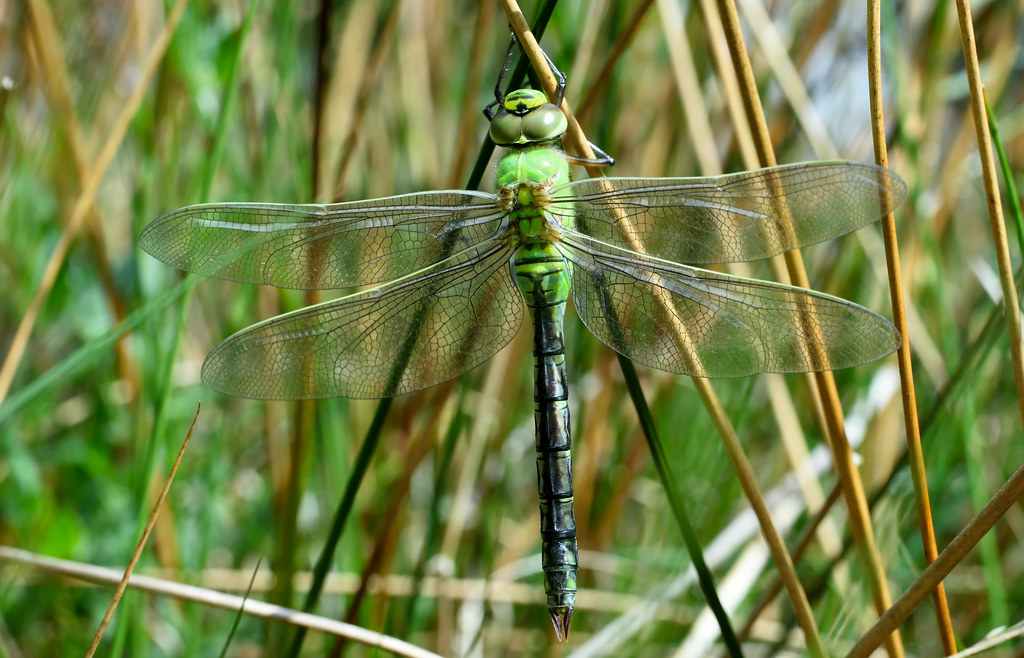
Dragonflies represent perhaps the most successful aerial predators in the insect world, with hunting efficiency rates that exceed 95% – surpassing even the success rates of large mammalian predators like lions and tigers. These prehistoric-looking insects possess two pairs of wings that can be operated independently, allowing them to hover, fly backward, change direction instantaneously, and reach speeds of up to 30 miles per hour. Their enormous compound eyes contain up to 30,000 facets and cover nearly the entire head, providing almost 360-degree vision that helps them track moving prey with extraordinary precision. The dragonfly’s brain processes visual information so quickly that it can predict where a moving insect will be, essentially solving complex calculus equations instantaneously to intercept their prey. Their modified legs form a basket-like trap that extends forward during flight, creating an inescapable cage for smaller insects unfortunate enough to cross their path.
Praying Mantises: Patient Ambush Specialists
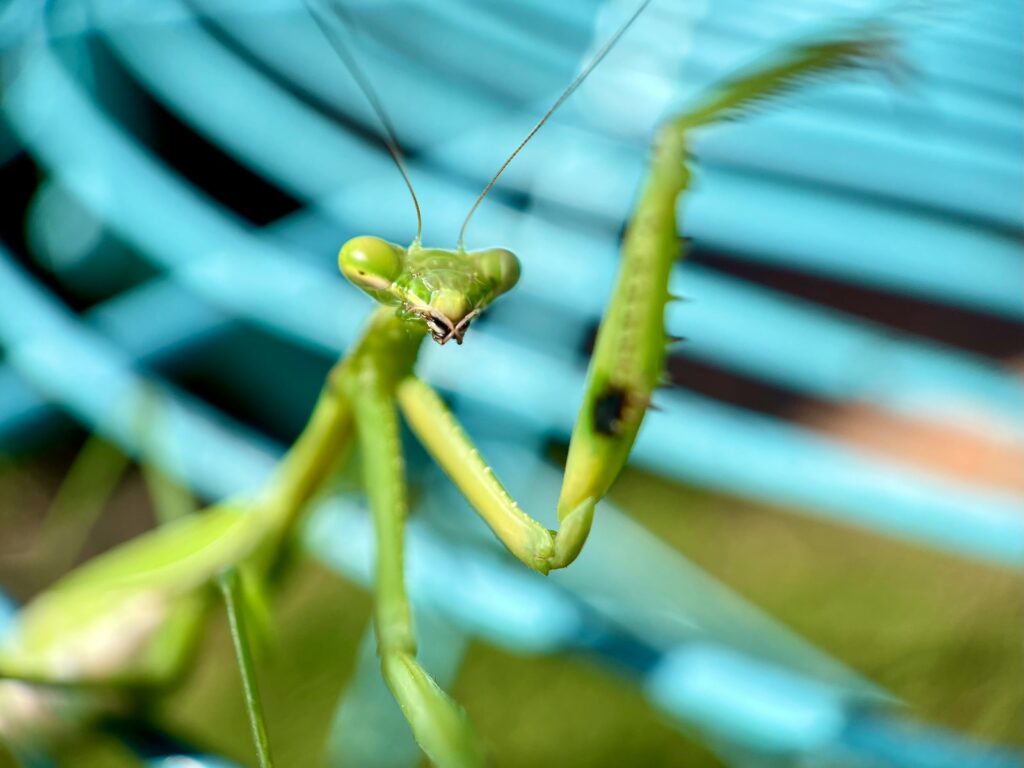
The praying mantis has become synonymous with deadly patience and lightning-fast strikes in the insect hunting world. These distinctive predators derive their name from their prominent front legs, which are folded in a position resembling prayer while they remain motionless, sometimes for hours, waiting for prey to wander within striking distance. When a mantis attacks, its raptorial front legs unfold at such incredible speed that they’re difficult to see with the naked eye, completing the strike in as little as 50-70 milliseconds – twice as fast as the blink of a human eye. Many mantis species have evolved remarkable camouflage that makes them nearly invisible against their preferred hunting backgrounds, including some that mimic flowers to attract pollinating insects directly into their grasp. The mantis is also unique among insects for its ability to rotate its head 180 degrees, coupled with binocular vision that gives it exceptional depth perception to judge the precise distance to its prey before striking.
Spiders: Nature’s Master Trappers
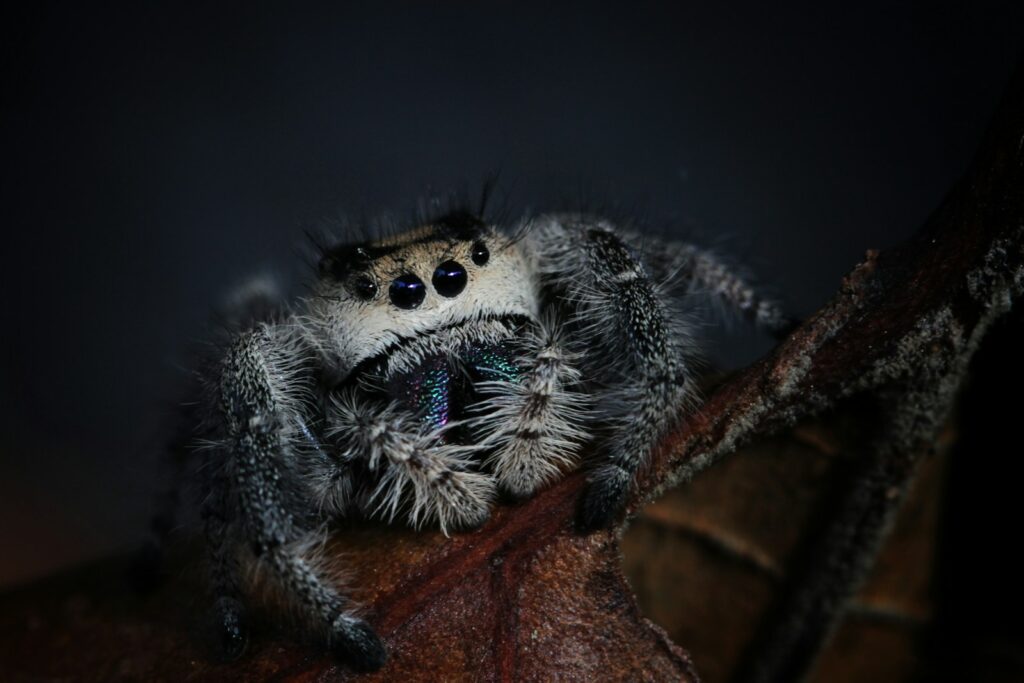
While technically arachnids rather than insects, spiders represent perhaps the most diverse and specialized group of invertebrate predators, with nearly all of the 48,000+ species being dedicated insect hunters. Orb-weaving spiders construct elaborate silk webs that function as both passive traps and early warning systems, with the spider detecting vibrations that signal when prey has become entangled. The jumping spider family takes a completely different approach, using their extraordinary vision (the best among invertebrates) to actively stalk and pounce on prey with remarkable accuracy, capable of leaping distances up to 50 times their body length. Perhaps most impressive is the bolas spider, which produces a single strand of silk with a sticky glob at the end, which it swings at passing moths like a miniature Argentine bolas weapon – all while releasing chemical pheromones that mimic female moth scents to attract males. Many spider species inject venom through their fangs that not only immobilizes prey but also begins external digestion, liquefying the insect’s internal tissues before the spider consumes them.
Antlions: Engineers of Death Pits

Antlion larvae demonstrate one of the most fascinating hunting strategies in the insect world by constructing conical pit traps in loose sand or fine soil. These remarkable predators excavate their pits by moving backward in circles, using their heads to flick sand outward, gradually creating steeper and deeper conical depressions with unstable, slippery walls. When an ant or other small insect wanders too close to the edge, it slips down the steep sides toward the waiting antlion buried at the bottom, with only its large, sickle-shaped jaws exposed. Any attempt by the prey to climb out triggers the antlion to throw more sand upward, causing mini-avalanches that tumble the struggling victim back down to the waiting jaws. Once captured, the antlion injects digestive enzymes that dissolve the prey’s internal tissues, then sucks out the liquefied remains, leaving behind only the empty exoskeleton. After several years of this predatory lifestyle as larvae, antlions transform into delicate, damselfly-like adult insects that bear little resemblance to their fearsome juvenile forms.
Assassin Bugs: Stealthy Insect Killers
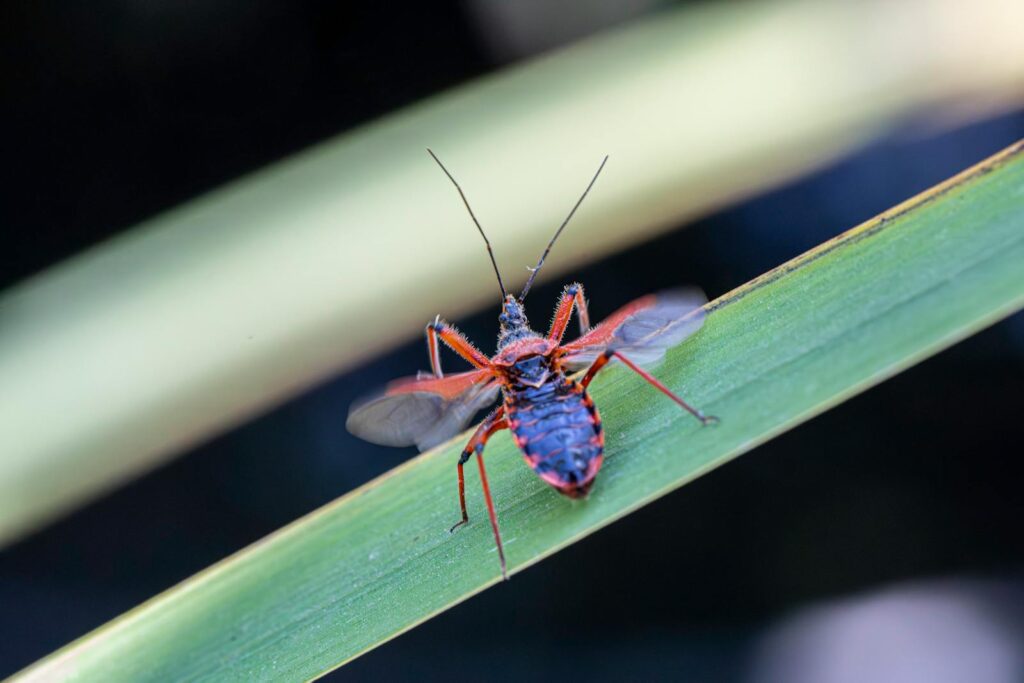
Assassin bugs earn their ominous name through their ruthlessly effective hunting techniques and deadly biological weapons. These true bugs (order Hemiptera) possess a distinctive curved proboscis – effectively a stabbing beak – that they use to pierce their prey and inject a potent cocktail of enzymes and toxins that both paralyzes the victim and liquefies its internal tissues. Many assassin bug species employ remarkable camouflage or stealth techniques, with some coating themselves with dust or debris to disguise their approach, while others mimic harmless insects to get close to their prey. The ambush bug, a type of assassin bug, can remain motionless on flowers for days, its coloration matching its surroundings perfectly until an unsuspecting pollinator lands within reach. Perhaps most macabre are the masked hunter assassin bugs, whose nymphs cover themselves with dust and the corpses of previous victims, creating a ghoulish disguise that both camouflages them and may help them approach prey undetected. Some assassin bug species can capture prey many times their size, including larger beetles, bees, and even small lizards.
Ant Colonies: Cooperative Hunting Machines

While individual ants may not seem like formidable predators, certain ant species demonstrate how collective hunting can create one of nature’s most efficient insect-capturing systems. Army ants represent the pinnacle of cooperative hunting, with colonies containing millions of individuals that form living highways and overwhelming raid fronts that sweep through the forest floor, capturing any arthropods unable to escape their advance. These colonies can capture an estimated 30,000-100,000 prey items in a single day, with special soldier castes equipped with massive jaws specifically evolved for dismembering larger prey. The Myrmecocystus honeypot ants of North American deserts use specialized scout ants to locate prey, then rapidly deploy groups of workers that surround and overwhelm victims before they can escape. Perhaps most sophisticated are the trap-jaw ants, whose mandibles can snap shut at speeds exceeding 140 mph – among the fastest movements in the animal kingdom – allowing them to stun or kill prey instantly or even propel themselves backward to escape threats. Through chemical communication, division of labor, and sheer numbers, ant colonies effectively function as superorganisms capable of hunting efficiency that far exceeds what any individual predator could achieve.
Tiger Beetles: The Speed Demons

Tiger beetles hold the distinction of being among the fastest insects on Earth relative to their size, capable of running at speeds that would equate to a human sprinting at over 480 miles per hour. These colorful beetles are visual hunters that rely on their exceptional speed to chase down prey across open ground, with long legs and sleek bodies built for rapid pursuit. Their large compound eyes provide excellent vision for spotting moving prey at a distance, while their oversized, serrated mandibles function as lethal grasping tools to seize and dismember victims. Interestingly, tiger beetles actually run so fast that they temporarily blind themselves – their brains cannot process visual information quickly enough during top-speed pursuits, forcing them to stop momentarily to relocate their prey before continuing the chase. The larvae take a completely different approach, creating vertical burrows in the soil where they wait with their armored heads functioning as living trap doors, erupting from their tunnels to seize passing insects with the same powerful jaws as their parents. With over 2,600 species worldwide, these beetles have evolved specialized hunting adaptations for environments ranging from sandy beaches and desert dunes to tropical forest floors.
Chameleons: The Ballistic Tongue Hunters

Chameleons represent one of the vertebrate world’s most specialized insect hunters, having evolved an extraordinary projectile feeding system unlike anything else in nature. These distinctive reptiles possess a tongue that can extend to lengths exceeding their body size, accelerating from 0 to 60 miles per hour in a mere hundredth of a second – producing acceleration forces that would be lethal to humans. The chameleon’s tongue works through a unique muscular catapult mechanism, with collagen tissues that store energy like a stretched rubber band before releasing in an explosive projection that can capture prey located up to two body lengths away. At the tip of this remarkable appendage is a muscular bulb coated with sticky saliva that adheres to prey upon impact, while retractor muscles rapidly pull the tongue and captured insect back to the chameleon’s jaws. Their independently movable eyes allow chameleons to scan their surroundings without moving their heads, with each eye capable of 180-degree rotation and focusing independently until both lock onto potential prey just before striking. While famous for their color-changing abilities (which serve multiple functions beyond camouflage), it’s their ballistic feeding system that makes chameleons among the most precisely effective insect predators in the animal kingdom.
Robber Flies: Aerial Hijackers

Robber flies represent some of the most formidable aerial predators in the insect world, capable of capturing prey as diverse as wasps, bees, dragonflies, grasshoppers, and even other robber flies. These flies possess exceptional vision through large compound eyes that allow them to spot moving insects from considerable distances, coupled with extraordinarily fast reflexes that let them make split-second course corrections during high-speed aerial pursuits. When a robber fly attacks, it grasps its prey with strong, spiny legs, then uses its sharp proboscis to pierce the victim’s exoskeleton and inject saliva containing powerful neurotoxins and digestive enzymes that rapidly paralyze and liquefy the prey’s internal tissues. Many robber fly species have evolved mimicry of stinging insects like bees and wasps, gaining protection from their own predators while ironically specializing in hunting the very insects they mimic. With over 7,000 species worldwide and body sizes ranging from tiny forest-dwelling varieties to the enormous “flying wolves” that can exceed two inches in length, robber flies have diversified to occupy nearly every terrestrial habitat and hunting niche available to aerial insect predators.
Venus Flytraps: Plants as Predators

The Venus flytrap (Dionaea muscipula) demonstrates that plants too can evolve into efficient insect hunters, developing one of the most famous and rapid movement mechanisms in the plant kingdom. Each leaf-derived trap consists of two lobes hinged along the midrib, with sensitive trigger hairs on the inner surfaces that activate the trap when touched multiple times within about 20 seconds – a mechanism that helps prevent the plant from wasting energy on non-prey items like raindrops. When triggered, the trap snaps shut in less than a tenth of a second, with interlocking marginal “teeth” preventing larger prey from escaping while still allowing smaller, less nutritionally valuable insects to escape through the gaps. Once closed, the trap forms an airtight seal and functions like an external stomach, secreting digestive enzymes that break down the captured insect over a period of 5-12 days, absorbing the resulting nutrient soup through specialized glands. This carnivorous adaptation allows Venus flytraps to thrive in nitrogen-poor bog soils where other plants struggle, obtaining up to 75% of their nitrogen requirements from insect prey rather than from the soil. While slower than animal predators, the Venus flytrap’s remarkable adaptation represents one of evolution’s most ingenious solutions to the challenge of insect capture.
Bats: Echo-Location Insect Specialists
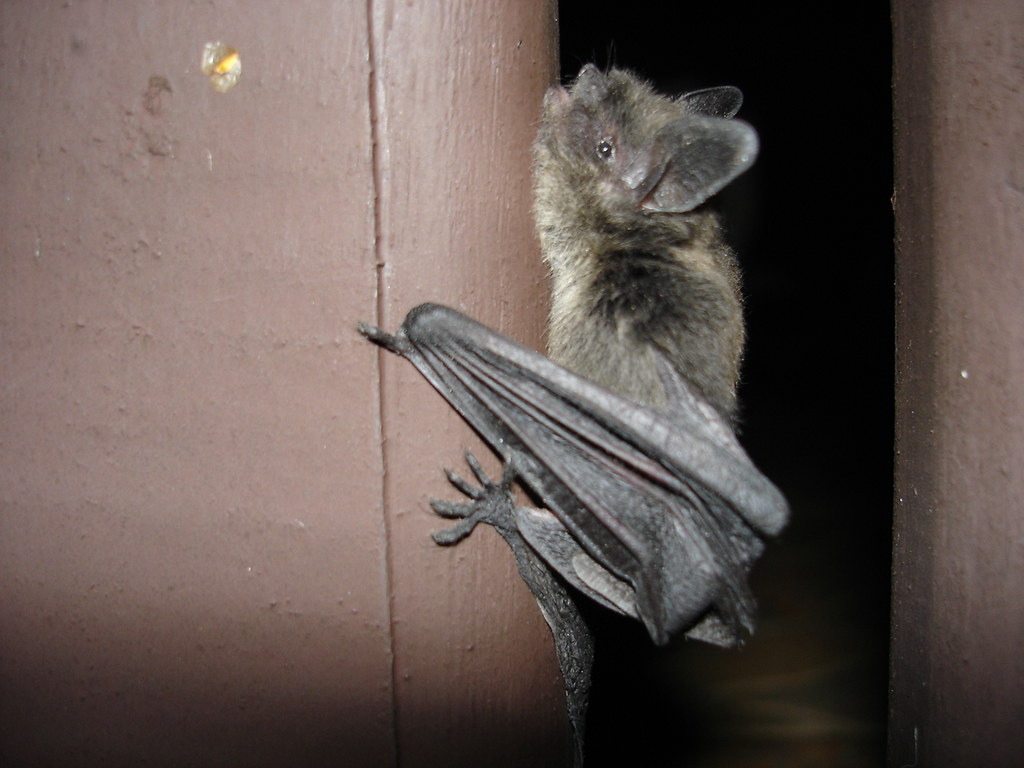
Insectivorous bats have perfected the art of nocturnal insect hunting using a sophisticated biological sonar system that allows them to detect, track, and capture flying insects in complete darkness. These remarkable mammals emit high-frequency calls through their mouth or nose, then analyze the returning echoes to create detailed three-dimensional acoustic images of their surroundings, capable of detecting objects as thin as a human hair. The little brown bat, a common North American species weighing less than half an ounce, can consume up to 1,200 mosquito-sized insects in a single hour, representing over half its body weight in a night’s hunting. Many bat species have evolved specialized adaptations for their insectivorous lifestyle, including the horseshoe bats with modified nose structures that focus sound waves, and the free-tailed bats with narrow wings designed for fast, hawk-like pursuit of moths and beetles. The evolutionary arms race between bats and their insect prey has produced remarkable counter-adaptations, including moths that can hear bat calls and perform evasive aerial maneuvers or even produce clicking sounds that may jam bat sonar. With over 1,400 bat species worldwide, most specializing in insect predation, these flying mammals collectively remove countless tons of insects from the environment each night, making them one of the most ecologically important insect predators on Earth.
Electric Eels: Underwater Shock Hunters
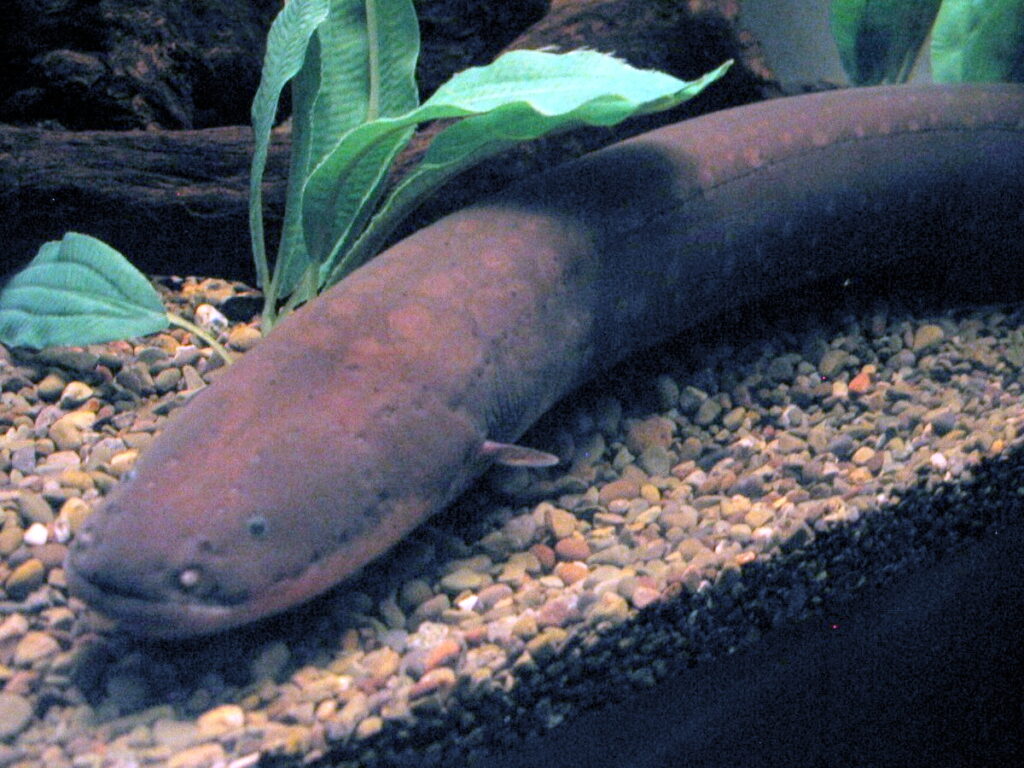
While primarily known for hunting fish, the electric eel (Electrophorus electricus) employs one of nature’s most unusual predatory adaptations that also makes it an efficient hunter of aquatic insects and invertebrates. Despite its name, this Amazonian predator is actually a type of knifefish, possessing specialized electrical organs that make up 80% of its 6-8 foot long body, capable of generating discharges exceeding 600 volts with a current of 1 ampere – enough power to stun or kill animals much larger than itself. Electric eels use three different types of electrical discharges: low-voltage pulses for electrolocation that allow them to navigate and detect prey in murky waters, medium-voltage signals for communication, and high-voltage discharges for hunting and self-defense. When hunting smaller prey like aquatic insects, the eel emits a series of high-voltage pulses that stun all invertebrates within a radius of several feet, causing them to twitch involuntarily and reveal their locations. Recent research has shown that electric eels can even use their electrical discharges to cause distant prey to convulse, essentially using remote control to force hidden insects and small fish to expose themselves. This remarkable adaptation allows electric eels to effectively hunt prey they cannot see in the turbid waters of their Amazon basin habitat, representing one of the most specialized insect hunting adaptations in the aquatic world.
The Evolution of Insect Hunting Strategies

The diverse hunting strategies employed by insect predators represent millions of years of evolutionary refinement in response to the challenges of capturing nutritious but elusive prey. The earliest insect hunters likely employed simple ambush tactics, lurking in wait for prey to come within reach of basic grasping appendages, similar to what we still see in primitive predatory insects today. As prey species evolved better detection and escape mechanisms, predators responded with counter-adaptations: improved speed and agility, better camouflage, more effective weapons, and increasingly sophisticated sensory systems. The evolutionary arms race between predator and prey has driven the development of remarkable specializations, from the ballistic tongues of chameleons to the silk traps of spiders, from the cooperative hunting of ants to the electrolocation systems of certain aquatic predators. This co-evolutionary process has created intricate ecological relationships where predator and prey capabilities remain finely balanced, with neither gaining a permanent advantage. Across different environments – from forest canopies to desert floors, from freshwater ponds to ocean shores – parallel evolution has repeatedly produced similar hunting strategies in unrelated species, demonstrating how certain approaches to catching insects represent optimal solutions to this predatory challenge regardless of the hunter’s taxonomic group.
The Ecological Importance of Insect Predators
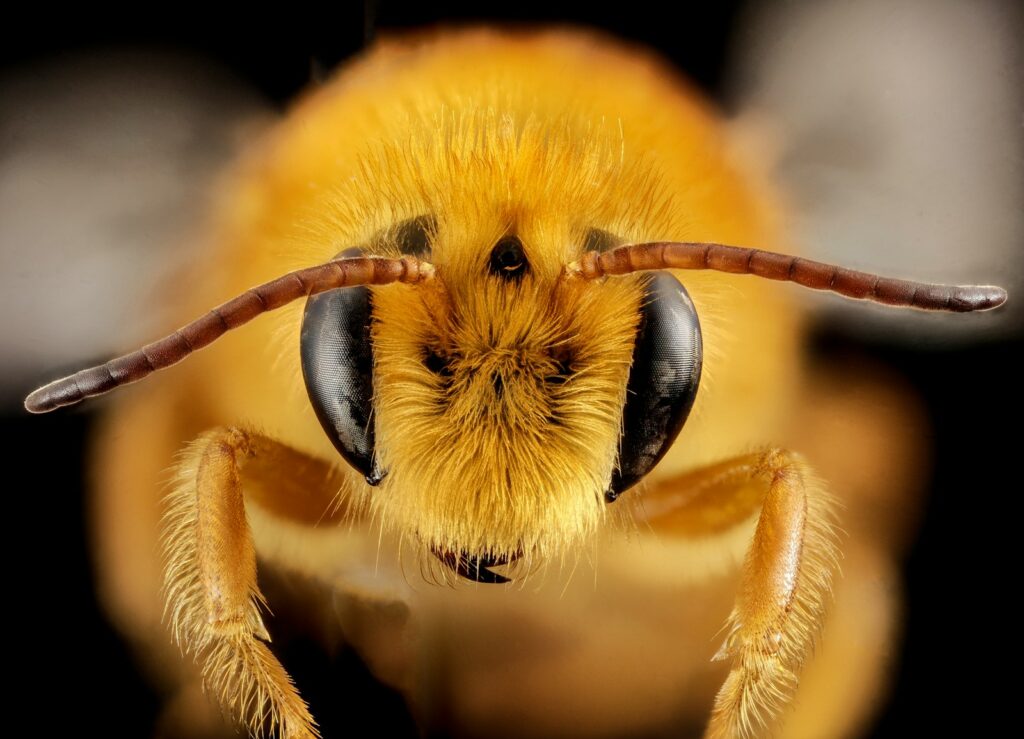
Beyond their fascinating hunting adaptations, insect predators play crucial ecological roles in virtually every ecosystem on Earth. These efficient hunters serve

